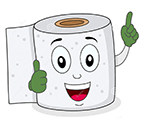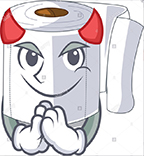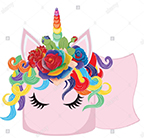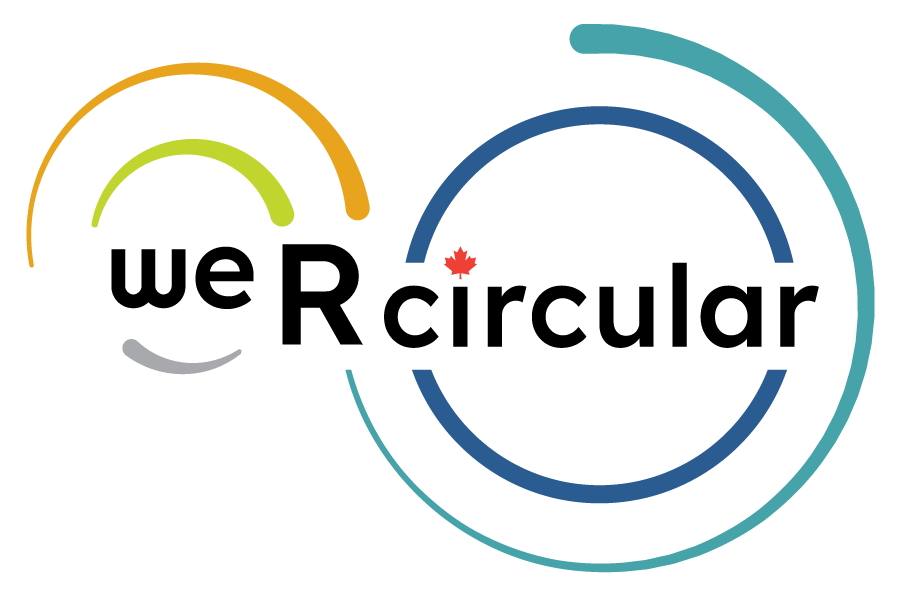The environmental Toilet Paper Challenge
Where do you stand?
This Challenge is a Georgian College Big Data Analytics initiative.
Balarama Vasista Vythavya Dhavala and Priyanka Lakkireddy are evaluating the public’s knowledge and consumer behaviour around environmentally friendly toilet paper use.
This study contributed to a better understanding of the value vs purpose driven consumers. How do we best communicate to these persona and drive traction toward sustainable toilet paper purchases.
We analyzed the responses to our “toilet paper” messages and surveys to help us better understand how to support conscious consumerism.
The result was that the MOST sustainable toilet paper is BOTH packaged in paper – not plastic – and made from recycled post consumer paper. The winner is White Swan – 100% post consumer recycle paper.
edThis is how you helped us…
We know toilet paper is VERY important in your life. Remember the beginning of the pandemic? We were the MOST important thing in your life! You MUST have preferences and ideas about what makes us special.
Over 7 days we posted a daily message with interesting facts to explore what determines environmentally friendly toilet paper. Your feedback on our messages guided us to determine the ultimate winner!
Here is the list of our daily message context. Thank you for helping us to learn, contribute and vote for your favourite environmental values.
- 100% post-consumer recycle content vs bamboo
- Shipping vs buying locally
- Increase the value of your blue bin
- Plastic vs paper packaging
- Quality of TP – the Consumer experience
- Cost/Quality comparisons – are you value driven consumer?
- Impacts on our planet – are you a purpose driven consumer?
This Challenge helped us find that perfect roll.
Introducing the cast of characters….

I am Green TP. I have been actively promoting care of the environment for decades. Not many heard about me in the beginning. I’m glad that more are interested in the environment these days. Help me promote ways to use environmentally friendly toilet paper.

My angle is to encourage green washing which looks green but benefits my company’s bottom-line more than the environment.

I think this is all nonsense and won’t make any difference to the environment.

Our goal is to engage with you to help determine the perfect toilet paper. Who is she? What makes her special and the best choice for the environment?
Scroll down to the daily messages we used.
How do you react to these points of consideration?
Which choice makes sense to you?
Check out the charts below for a list of brands we chose to identify and click on the button taking you to the directory so you can visit their website and leave reviews of the products.
Be sure to identify the “ply” weight for your toilet paper purchase. Something to consider is the lower the ply the more quickly toilet paper will “disolve” and decompose. Single Ply is the best type for a septic system that needs special consideration by home owners. Wouldn’t it make sense that this would also be best for city waste water management systems?

How does the Brand convince you that their product is sustainable? There are many ways of saying “sustainable”. Which language resonates best for you?


AND… the winner is…. White Swan – 100% post consumer recycle paper
Day #1 Message:
100% post-consumer recycle content vs bamboo. This is one of the biggest considerations we noticed in our research.
Some positive key words for bamboo:
- sustainable agriculture
- organic
- renewable resource
- responsibly sourced
Some negative key words for bamboo:
- non-local (from a Canadian context)
- agriculturally based
- displacement of wildlife (for agricultural spaces)
Some positive key words for
100% post-consumer recycle content:
- Value from “waste”
- Reuse of material
- Non-virgin material
- Reward our recycle behaviour
Some negative key words for 100% post-consumer recycle content:
- Less white
- Less soft
- Less absorbent
Day #2 Message:
Shipping vs buying locally
This question has two aspects to consider.
- Where is it made in relation to the Canadian market?
- Can you purchase it at your local grocer or do you need to order it online?
Here is what the research told us….
Where is it made?
Bamboo grows predominantly in China. This means that the bamboo toilet paper is either made there and shipped to Canada or the pulp/paper is shipped here. Either way the product crosses the ocean in a shipping container.
- Cascade and Kruger (White Swan) have Canadian paper post consumer recycle plants.
- Seventh Generation is produced by Unilever, a North American manufacturer, who recently contributed $15M to recycle producers to support post consumer recycling to use for it’s products and packaging. This coincides with their recent launch of a paper based laundry detergent bottle.
- Green Forest is manufactured in North America by Planet, a leading environmental product company
- We were not able to research where PC Green is manufactured.
Do you need to order online or can you pick up while doing grocery shopping?
The interesting factor we researched is the shopping habits of consumers on Amazon. The biggest surprise was that the MOST ordered product was toilet paper and paper towels! Why? It appears that people don’t want the responsibility of carting it home and prefer to have it delivered to the door.
So… now we need to consider is it better to bring home your toilet paper with you groceries or have it delivered? Two vehicles on the road vs one. We feel being able to pick up locally is an important factor to consider.
The brands that are available in Canadian stores for pickup are:
- White Swan
- PC Green
- Seventh Generation
- Silk’n Soft
Do you know of others that qualify? Please let us know.
Day #3 Message:
Increase the value of your blue bin
Do you ever consider how your actions can increase the value of your blue bin contents? Your consumer behaviour has a direct impact on this. If you purchase products made from post-consumer recycle materials, then your blue bin content goes up in value.
Likely you are questioning the status of Canada’s recycle destination these days. For the last few years, the Canadian recycling industry has gone through some changes.
Here is a quick history lesson:
- China started importing the world’s scrap in the 1990’s as it became the world’s manufacturing powerhouse.
- China was admitted into the World Trade Organization in 2001, causing their global exports to ramp up quickly.
- Many of the goods China sold around the world were delivered in container ships, and rather than having them return home empty, they took on the bulk of the world’s recycling. These recycled plastics were then turned into goods like t-shirts, sweaters or fleece jackets. This made recycling programs around the West cost-effective, and it became far cheaper to send recycling to China than to process at home.
- China announced Operation National Sword in 2018, a program which effectively banned the import of many recyclable materials. Plastic imports dropped by as much as 99% between 2017-2018. Operation National Sword is still expanding, with the goal of banning all ‘waste’ imports by 2020.
- In 2017 Canada began developing it’s Extended Producer Responsibility (EPR) programs. This is the transition of responsibility for packaging and end of life product to the producer of that product.
Here is a good summary of EPR status in Canada:
https://globalnews.ca/news/5207352/how-to-fix-canadas-recycling-industry/
Putting the right materials into your blue bin supports the ability to supply manufacturers who create products from our “waste”. Buying products manufactured from post-consumer waste is the key to continuing the use of that material. Keeping materials in use for as long as possible is critical.
When they reach end of life, they need to be as biodegradable as possible to rejuvenate our earth…. This will be covered in an upcoming message in our series!
Day #4 Message:
Plastic vs paper packaging
One of the biggest advantages of plastic packaging is that it is much lighter weight than paper. This means that if you are purchasing toilet paper that is shipped a long distance – plastic has a reduced carbon footprint than paper.
If you decide to buy toilet paper wrapped in plastic, the second factor to consider is if your municipality allows for recycling of plastic. You certainly don’t want it to end up in landfill since the decomposition is 1000 years, compared to paper which will quickly biodegrade and be regenerative for our earth’s soil. Keep in mind that many countries are beginning to ban single use plastics.
There are bioplastics that companies can consider using, in place of standard plastic, but the standard vary widely. Some can home compost, but others need an industrial compost environment with higher temperatures.
https://www.bbc.com/future/article/20191030-why-biodegradables-wont-solve-the-plastic-crisis
You now have the facts… Would you buy toilet paper wrapped in paper or plastic?
Day #5 Message:
Quality of TP – the Consumer experience
It was the Great Toilet Paper Panic of 2020. The previous day, March 12, TP sales had ballooned 734% compared with the same day the previous year, becoming the top-selling product at grocery stores by dollars spent, according to NCSolutions, which tracks consumer packaged goods (CPG).
Why are we so panicked about running out of Toilet paper?
– It only became a staple in the 1940’s.
– Since then advertising has convinced us that we need pure white, soft as possible toilet paper for our bottoms.
– The TP shortage was a global issue. Everywhere people began to work from home and be isolated at home increasing residential use exponentially.
One thing to note is that “home” toilet paper is very different from “office or industrial” toilet paper. We choose soft, white, 3 ply toilet paper in our home shopping. Business supplies us with one ply and large rolls that we put up with in restaurants, offices and travel.
Even if we had wanted to make it possible, the large industrial rolls could not be made available on grocery shelves. They are not bar coded or packaged for residential use.
Question:
When the grocery shelves were empty in March 2020, would you have been happy to buy restaurant/office style toilet paper (1 or 2 ply, large rolls) ?
Day #6 Message:
Who are value-driven consumers?
Value-driven consumers are primarily concerned with getting their money’s worth and select brands based on price and convenience. And unlike the other customer segments, this group isn’t inclined to switch habits to reduce negative environmental impact.
From our Research, we have found…
What are the Major Value drivers while buying a product?
1.Price
Price is a monetary element and it is one of the main factors that a customer considers before buying any product. It has a massive impact on customer’s buying decisions. While the customer may base his final buying decision on the overall benefits offered by the product, he is likely to compare the price with the perceived value of the product to evaluate it.
After learning about the price, the customers try to learn more about the product qualities.
Therefore price is a critical factor that influences a buyer’s decision.
If you are more concerned about the pricing then, White Swan and Pc Green are the affordable And available in grocery stores without cost of shipping
Who Gives a Crap gives the best price on the Toilet Papers on the long run i.e.,on Subscription.
2.Quality
The extent or degree to which your product or service meets the expectations and needs of your customers. If your offering exceeds customer expectations, you are selling a high-quality product or service.
The two greenest toilet tissues are bamboo and recycled, but which is greener — bamboo toilet paper or recycled toilet paper?
Bamboo comes from highly-renewable bamboo trees, but ships a long distance. 100% recycle is manufactured in North America. Both are offered in paper packaging as opposed to plastic.
Check out the handy chart on this website that gives you comparisons of all the different brands.
3.Convenience
A customer buys a product as a solution to a particular problem. Therefore, a product’s functional features are an essential driver for a customer. If your product is giving more features than a customer’s expectation, your product will have more perceived value.
Each Brands produces a Toilet Paper with a particular functional feature. What do the below statements impact your decision making?
- Tushy is the 100% Safer Toilet Paper.
- Green Forest is the Economical TP.
- Cloud paper TP absorbs quickly.
- Number 2 manufactures TP which are clog and septic safe.
Question:
Are you a value-driven Consumer who is interested on the Price, Quality and Convenience while buying a Toilet paper?
Which brand would you choose from our directory list?
See buttons below to send us feedback and view our brands. You can also scroll down to see the consolidated chart of brand specs.
Day #7 Message:
Impacts on our planet – are you a purpose driven consumer?
By now, the data that supports the thesis that “Purpose” (the catch-all term for “business as a force for good”) is good for business is overwhelmingly clear.
Please give us your feedback using the button below.
Be sure to identify the “ply” weight for your toilet paper purchase. Something to consider is the lower the ply the more quickly toilet paper will “disolve” and decompose. Single Ply is the best type for a septic system that needs special consideration by home owners. Wouldn’t it make sense that this would also be best for city waste water management systems?

How does the Brand convince you that their product is sustainable? There are many ways of saying “sustainable”. Which language resonates best for you?

Be a conscious consumer
We need feedback to inspire the belief that it is possible to achieve our global visions for climate change. It is your conscious decision when purchasing products and services that make this possible. We will provide a voice to your passion and support the vendors you trust.
